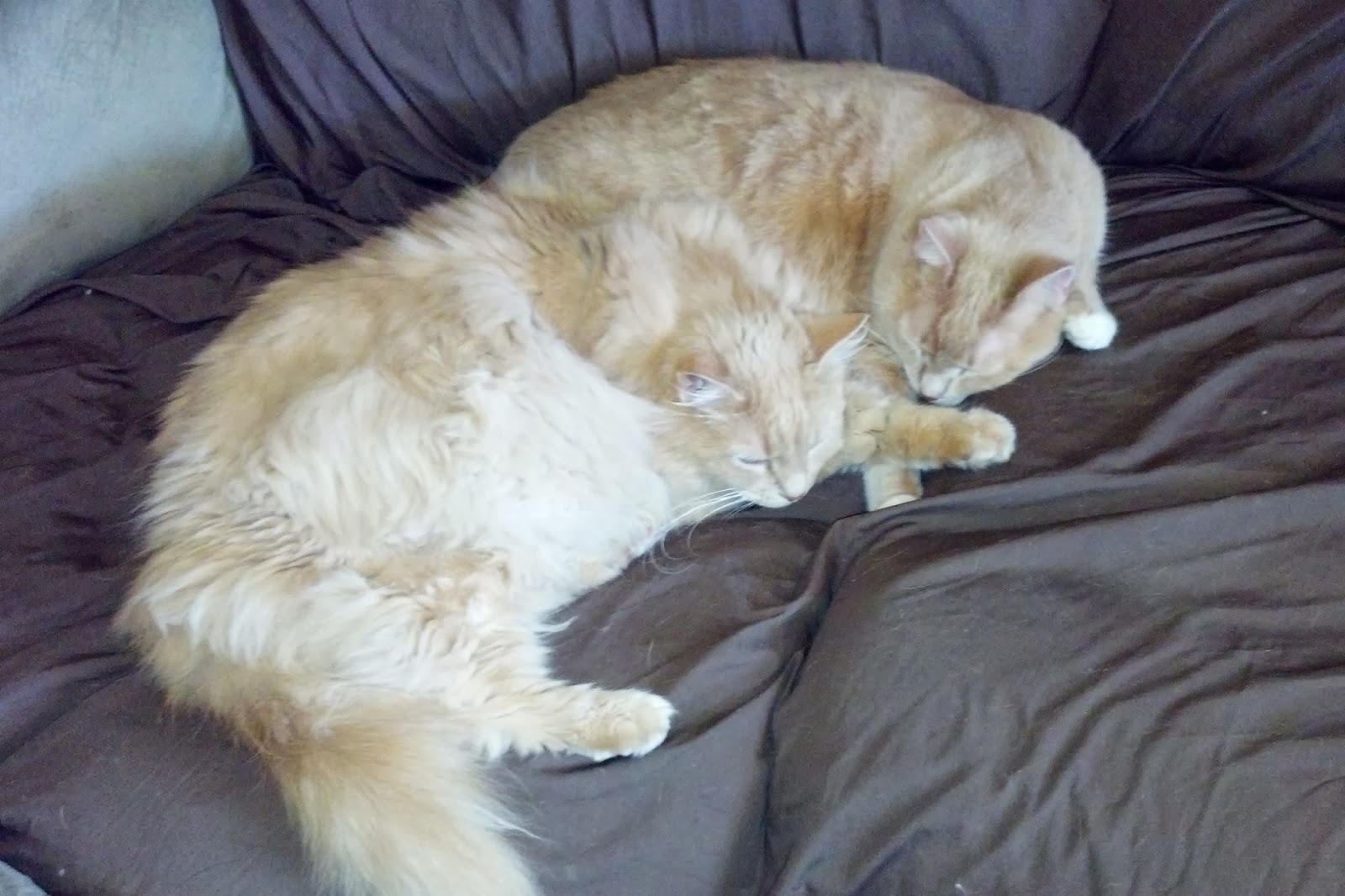by Amanda L. Maus DVM
Catalina Pet Hospital
Tucson, AZ
Most cat owners with multiple cats expect some rough play between their cats - playing chase, wrestling, etc. What can be frightening is when one cat is obviously the victim, who spends most of their time hiding or hissing and in severe cases, not eating or not using the litterbox. Typically intercat aggression is either transferred/redirected aggression, play aggression, or territorial aggression.
For mild or severe cases of aggression, evaluate your home to make sure that there are enough safe zones for hiding and high up perches. Also, consider purchasing feline pheromone sprays or plugins that can help calm cats. You can discuss with your veterinarian about purchasing prescription foods meant to calm stressed cats. Make sure your cats are receiving adequate, vigorous play time to provide a release for their prey drive instincts. One scenario is to have the cats play out their natural instincts before meal times. Both cats are thoroughly tired out by a vigorous play session with wand or fishing rod type toys with their preferred "prey" attached to the toy. After they have sufficiently "killed" the prey, they are rewarded with eating.
Mild aggression
Anytime you are worried that the victim cat may be harmed, you should separate the cats when you are not available to directly supervise their interactions. When you are home, you can use favorite food rewards for the cats tolerating each other's presence. The victim should be be calm enough to eat without hissing and the aggressor should eat without growling. In day to day life, if there are early signs of aggression, usually calling the aggressive cat's name or shaking a treat bag is enough distraction to prevent the fight from starting.
Severe aggression
In cases where you have already witnessed harm come to the victim or the victim spends most of their time hiding or not eating, you should definitely separate the cats when you are not around. The victim cat should be free to move about the house and the aggressor is blocked off into a bedroom or other small room with their own food, water, and litterbox.
In severe cases, it may takes months for full reintroduction to occur. You can attempt reintroduction with the cats in separate carriers. Starting with the carriers far apart, favorite food rewards are used to reinforce calmness. Over time, the distance between carriers is reduced. An alternative is to feed the cats on opposite sides of a solid door so they associate each other's smell with something positive. A baby gate or screen door can be gradually introduced so that the cats see as well as smell each other while eating.
After reintroduction, if signs of aggression recur, you can use the above tips for distraction or you may need to squirt the aggressive cat with water or use a loud sound, such as clapping hands or using a compressed air canister. In some cases, prescription medication is needed to help "keep the peace".
Next week, we will look at resolving aggression towards humans.




No comments:
Post a Comment